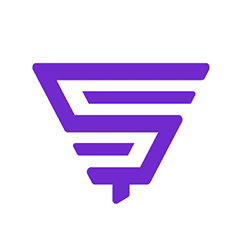The ability to deliver amazing employee experiences will continue to play a critical role in the ability to hire, retain and activate the very best talent. Why? Because your employees care deeply about their experience and your future workforce is listening to what they have to say about it. Around 70% of Millennials say they hear about companies through friends and job boards.
For talent leaders focused on winning (and retaining) right-fit talent, investing in an amazing experience that your employees are motivated to share has never been more important than it is right now. Simultaneously, CHROs have ever-rising expectations to exceed. Today's more fluid, digitally native workforce requires an experience that works on multiple devices, complements existing collaboration tools and fits seamlessly into life outside of work.
Therefore architecting and delivering a personalized, seamless experience requires a digital strategy that begins with the candidate experience and onboarding, builds towards clearly defined career mobility and includes the opportunity to listen for feedback and proactively adjust consistently.
When executed well, a carefully nurtured employee experience translates into powerful brand advocacy amplified across your employee's more receptive social networks. Here are best practices helping CHROs create and deliver amazing employee experiences.
Setting the tone early during the candidate journey
The candidate experience can begin anywhere; it nearly always happens on a mobile device, and it rarely starts on your careers page. It usually begins on a larger job board, followed by the typical job seeker reading at least six reviews before forming an opinion of a company.
With so much of this path out of your control, it's critical to set the tone early on for your employer brand. How can you do that? Understand where they land, and make sure all paths lead to rich job descriptions, written in real language, that help a candidate quickly understand the top five things they care about most. According to Glassdoor, they care the most about: 1) Salary/compensation, 2) Benefits, 3) Basic company information, 4) What makes it an attractive place to work, 5) Company mission, vision, values.
When they do land on your career site, make sure the brand story is authentic, consistent and relevant with curated, rich media content that speaks to the specific job category.
Prioritizing the first 90 days
Assuming an amazing candidate experience led to a new hire, carrying that experience through the onboarding process plays a huge role in building engagement and nurturing a future brand advocate. Onboarding is NOT orientation; the first 90 days are a critical time for seed engagement. According to Aberdeen, 90% of employees decide whether they will stay with an organization, or leave, in the first six months!
So what do an engaging first 90 days require? It requires a system and a process that eliminates isolation and facilities engagement between team members, direct managers, and other leaders in the organization. It also requires simple knowledge transfer about products, services or specific projects which helps an employee feel productive from day one.
Continuously engaging employees
You've made the first 90 days engaging! Don't relax yet. Too many TA teams make the mistake of investing in candidate relationship management (CRM), but underestimating the need to extend that strategy through talent relationship management (TRM). This is a costly mistake. Companies with engaged employees outperform those without by 202%.
Just like every relationship in life, employee engagement takes continuous effort. It should include offering proactive ideas on skills development, mechanisms for collecting feedback (anonymous or not) and providing opportunities for employees to keep the organization informed about their personal development.
To have the largest impact, this nurturing needs to complement other internal processes that take place regularly such as shift scheduling, performance management, or learning and development programs.
Leading CHROs leverage machine learning and drip campaigns to segment and personalize engagement content according to an employee's stage of development or existing level of engagement within the organization.
Clarifying career mobility
You're keeping your employee engaged. Now what? Make sure that engagement provides a mechanism for growth. According to a Glassdoor study, the length of time in one role is one of the top predictors of employee retention and turnover. This makes continually illuminating a career path critical. An effective career pathing program provides details into multiple paths for advancement, identifies skill gaps and provides development resources for the employee to close those gaps. Think it's optional? It's not. 71% of Millennials likely to leave their companies in the next two years are unhappy with how their leadership skills are being developed.
Continuously engaging your employees gives you the ability to deliver intelligent career mobility recommendations the moment they become relevant. As an employee makes progress in their career, learns new skills and provides inputs about future aspirations machine learning tools provide the ability to process data meaningfully and open up internal paths for the employee.
Bottom line: if you are not marketing careers to your employees in this highly competitive talent market, you are the only organization who is not marketing to them.
Activating advocates
You've created an amazing experience for your employee, successfully engaging and nurturing a strong relationship. Now what? Let their enthusiasm work for you! Engaged employees are your most powerful brand advocates and their ability to amplify a trustworthy brand story and refer higher quality candidates is second to none.
An effective employee advocacy program takes full advantage of popular social media channels and makes it easy for employees to personalize and share branded content from their mobile device in just a click or two. It works too. Millennials trust what their friends say more than what they'll read on your website with 65% of them more skeptical of claims made by employers now than they were in 2011.
In a culture of increasing transparency, architecting and delivering an amazing employee experience has never played such a huge role in talent acquisition. The CHRO's ability to design and execute a digital strategy that considers the entire lifecycle from candidate through advocate will continue to be a major competitive advantage. The great news is that the technology is here and tools to support that strategy have never been better.



